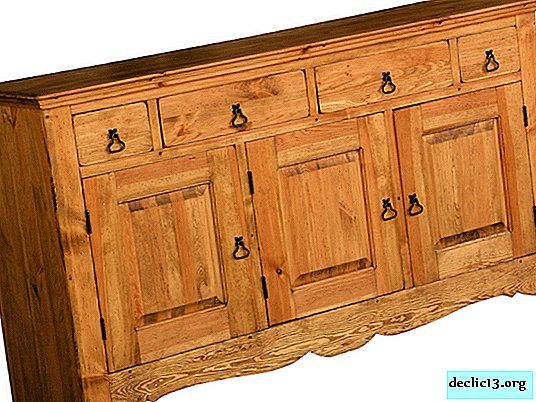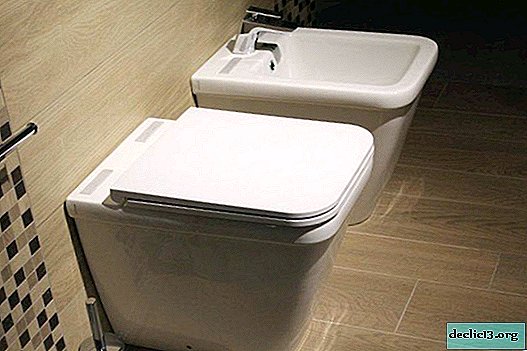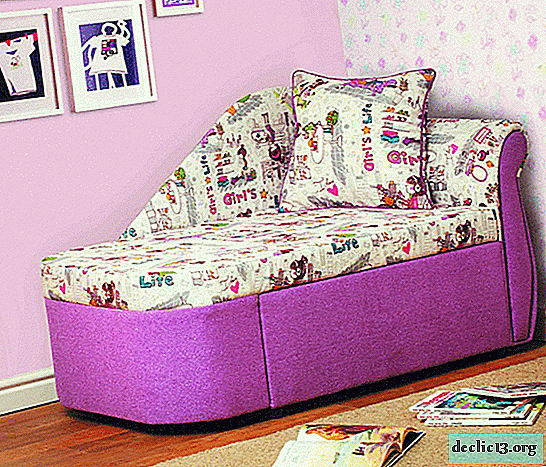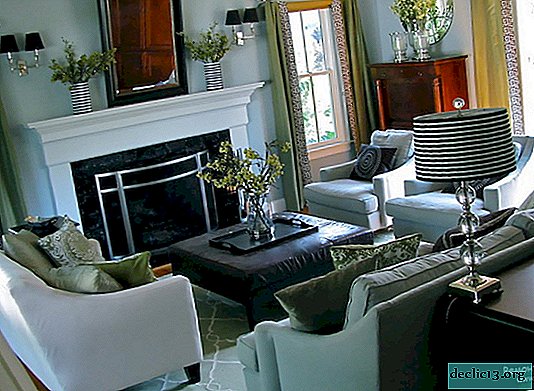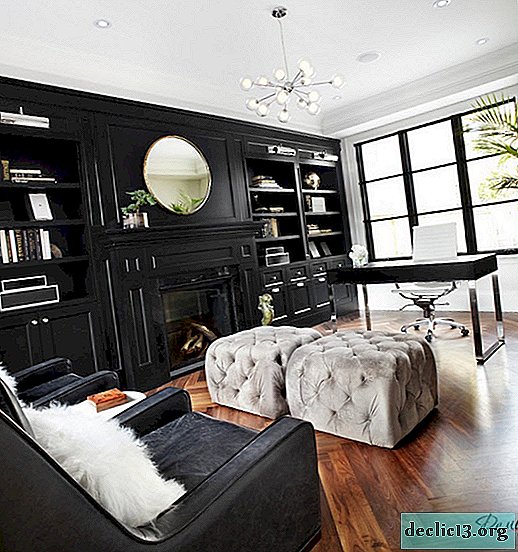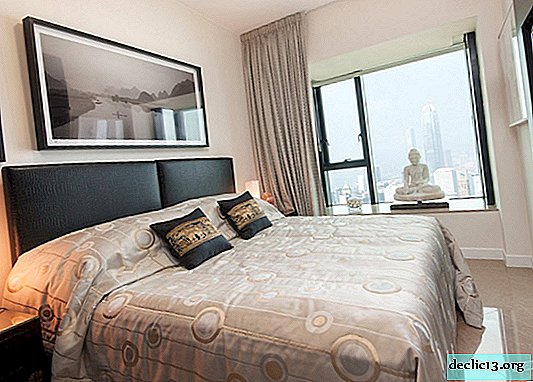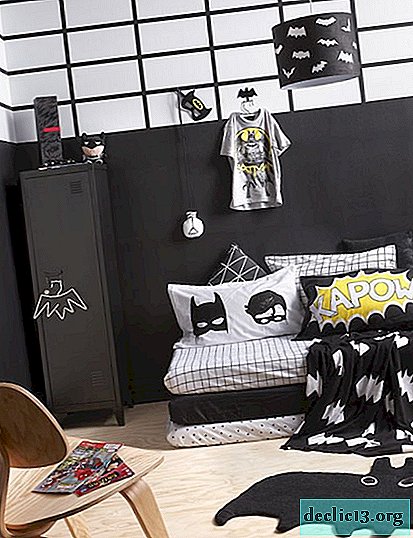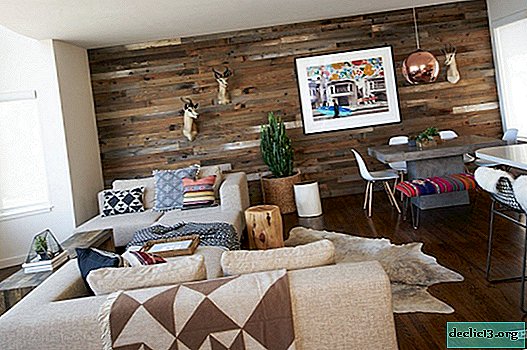One-room apartment design - 100 design options
There is not much living space. But this axiom often affects the owners of spacious apartments not in the best way - large areas are spent irrationally. But the owners of small apartments are used to save every centimeter of space and already know by heart all the ways to visually expand the space and efficient layout. Given the continuing increase in property prices (especially in large cities), many of us may consider it a happiness to own even a small but separate one-room apartment. And it is necessary to equip this home with maximum practicality, comfort and efficiency. At the same time, not forgetting about modern trends and personal preferences in interior design. The task is not easy, but doable. Moreover, over many years, designers have gained considerable experience in creating ergonomic, functional and outwardly attractive design projects for one-room apartments. We bring to your attention a kaleidoscope of ideas for creating a multifunctional interior of a small dwelling and hope that it will help you create an original and convenient design of your own apartment.
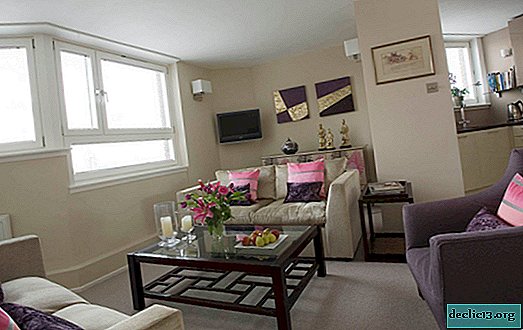


Design ideas for decorating a small area
Before proceeding with the planning of repairs in a one-room apartment, it is necessary to determine the number of functional segments:
- whether there will be a combination of the kitchen with the room to increase the total area and create an open-plan interior (this may require not only the demolition of walls and dismantling of doorways, but also the transfer of communication systems);
- decide on the number of zones in the living room - a segment of sleep and rest, a video zone, a workplace, a children's corner;
- it is also necessary to find out whether it is possible to increase the total area by joining the loggia;
- in the "Khrushchev" there is a pantry, which can be converted into a built-in closet, thereby unloading the room and eliminating the need to install a large storage system for the wardrobe of the whole family.




If in fact changing the number of free meters is not always possible, then achieving visual expansion of the space is not difficult using the following design techniques:
- One of the easiest and most popular ways is to use a light palette. In order to make the room seem larger, but it does not look shapeless (which happens with the total use of light tones for all surfaces), use the following tonal layout - the ceiling is the lightest, the walls are one or two tones darker, and the flooring is contrasting dark;
- glossy, glass and mirror surfaces will also help to create an easy and fresh image of the room, slightly moving the boundaries of a small area of your only room;
- in small spaces it is necessary to give preference to furnishing simple and concise models. Any manufacturer has in its arsenal a line of compact, but at the same time functional and incredibly practical models of sofas and armchairs, storage systems and attributes to them;
- reduce the use of decor to a minimum, this does not mean that the whole situation should be minimalist, devoid of decorations, but you will have to abandon floor elements, preferring the metered use of wall decorative elements;
- small spaces especially need adequate lighting. If you can increase window openings to increase the flow of natural light very rarely, then providing the room with multiple sources of artificial lighting is simply necessary. With the help of a lighting system, you can not only zone the space, but also decorate it.





In small rooms, you have to use the whole arsenal of useful design techniques for the correct distribution of space and its visual increase. The light shades of the color palette of decoration and furnishings, the use of furniture made to fit the size of the room and fit perfectly into it, the use of transformer mechanisms and the faithfulness to the principles of minimalism are also used.





The combined use of white shades for surface decoration and the installation of mirror planes as part of the finish allows you to create maximum illumination even in a room located on the north side of the building. The snow-white environment is best "diluted" by the integration of wooden surfaces and furniture in warm, natural colors - from pastel to dark chocolate.





No less effect to create a light, airy image of the room can be achieved by using glass and plastic interior elements. Transparent plastic and glass seem to dissolve in space. A dining group or a coffee table, a desk or a console - all these items will not burden the design of a single room, if they have a transparent texture. For the modern style of room decoration, such elements are perfectly suited.



In combined rooms, you must use any available advantage. For example, if the ceilings in your apartment are above average, then using this design feature is simply necessary. Built-in storage systems under the ceiling are only at first glance impractical. To reach them, you must use a stepladder or at least a chair. But you can also store household items in such lockers that are taken out once a season or even used as needed.


The high ceiling of the apartment can be used to create an additional residential tier. A sleeping place as an attic bed for adults is a reality of our time. The lack of square meters can more than be compensated by the creation of the second level. It is only important to entrust this lesson to specialists who can not only correctly calculate the load, but also perform all work with a quality guarantee. Moving the sleeping area to the upper tier, you free up the main space for arranging the living room, dining room and kitchen.

Transforming furniture can greatly simplify the life of those who are forced in one room to have a living room, bedroom, workplace and, possibly, also a kitchen with a dining room. A folding bed, which is hidden during the day by the front of the closet, is laid out at night in a full sleeping place for two. Folding worktops that can serve both for organizing a dining area and a workplace. All these devices, which can hide in a closet during a reception, serve the owners to create a comfortable environment after they leave. But it is important to remember that each folding mechanism has its own limit on maximum load. When manufacturing furniture with folding mechanisms or buying ready-made solutions, it is important not to save on fittings - after all, all the elements will be actuated daily and even several times a day.






When creating an interior for small rooms in which it is necessary to combine several functional segments, many designers are inspired by the ideas of the Scandinavian style. Despite the fact that this style loves spacious and bright rooms, its motives can be used to design small-sized apartments. A reasonable share of minimalism, creating the most practical, but at the same time comfortable environment, simple and concise decisions in terms of furniture and the green light to use a sweet heart decor to bring comfort to your home are the main ideas that attract designers and their customers.



Studio apartment or kitchen with room
The combination of all functional segments of the home with the isolation of only a bathroom for a reason has gained such high popularity around the world. This design technique allows you to create the most comfortable and spacious room as much as possible in principle with the number of available square meters. If twenty years ago this type of dwelling was still a novelty for our compatriots, now it is practiced with great success for married couples without children or single people.





Whether you got a studio apartment with a ready-made layout or if you had to demolish all non-load-bearing partitions yourself - the result is one - you need to correctly distribute the available space. The advantage of such rooms is that the entire space is evenly illuminated by sunlight (no partitions or other obstacles) and seems larger than its actual size due to the use of an open plan. But it is nevertheless necessary to provide sources of artificial lighting for each functional segment.





One of the advantages of using an open plan is the absence of any partitions and obstacles not only for traffic, but also for the distribution of light. Zoning of functional segments occurs with the help of furniture. Also, the conditional boundaries of each zone can be identified using carpet (in the living room and bedroom segment, for example) and a lighting system (it is obvious that one central chandelier is not enough for the whole room).





In the case of open planning, there are two options for the distribution of recreation and sleep areas, work space. In the first case, the room is designed as a living room, and the role of the sleeping place is played by a sofa bed, which can be laid out only at night. The advantage of such a layout is that you can organize such a situation even on a very modest in size area. But there is a significant drawback - the owners will have to constantly sleep on the couch, and even the most comfortable models cannot be compared in ergonomics to sleeping in bed, on an orthopedic mattress.




If your living room will serve you at the same time as a bedroom, then it is best to choose a sofa on the corner model. When assembled, in the afternoon, such sofas can offer a sufficient number of seats for the owners and their guests, in the evening - they are laid out in a full berth for two. Among other things, the corner structure is very convenient to install in the corner of the room by the window. Thus, the light from the window opening will not overlap (which is very important for small spaces) and the "dead" zone of the room can be used as efficiently as possible.




The second way to organize functional zones in a single room is to install a full-fledged sleeping place in the form of a bed and upholstered furniture to design a living room recreation area. This option is suitable for couples without children and those who do not mind the openness of the sleeping area. Depending on the size of the room, the living area can be directly adjacent to the sleeping segment or isolated with furniture.



One of the methods of zoning a bed in a common room is to erect a bed on the podium. In such structures it is very convenient to have spacious storage systems, which are always not enough in small-sized dwellings.




We isolate the sleeping area in a common room
Not all owners of one-room dwellings have an open-plan option. For many, it is important to be able to retire to a certain extent in the sleeping and resting area. For someone, a frosted glass interior partition is enough, while others need blackout curtains that do not allow light to pass through. Depending on the size of the room, the number of windows and the size of the bed (single or large double) that you need to separate, you can choose the following options for designing sleeping areas:




The sleeping and resting zone behind the interior partition gives the owners a sense of some privacy, but it does not completely separate the segment from the general space. At the same time, light from the windows can penetrate into the sleep zone, if there is no window opening of its own. As an interior partition, it is most practical to use racks or cabinets. It can be either a double-sided shelving unit with open shelves, or a storage system on one side and a surface on which shelves, a mirror, a TV or wall decor on the other can be hung.





Curtains, roller blinds, vertical blinds and other types of fabric barriers can be an option to isolate a sleeping place for those who need to be able to retire. This method does not require you to build partitions. All that is needed is the installation of a guide for fixing curtains or blinds. If the guide is attached to the ceiling, then in the curtained version, the sleep zone will not receive its share of natural light (provided that there is no window in the sleeping segment). If you place the bar for curtains at the level of human growth, then the remaining space is enough to provide a segment, albeit dim, but still lighting.


Another option for creating a fence for a berth is to design a zone using glass (or partially such) partitions. Almost half of the sunlight penetrates through the matte surface, but what is happening behind the partition remains indistinguishable. The glass partition gives a sense of isolation on the one hand, and leaves the idea of involvement in a common space on the other.



Experts recommend the use of glass inserts for partitions in the case of creating a completely isolated segment for sleeping and relaxing. Even small transparent inserts the size of the ceiling to the doorway will help provide the sleeping area with a little natural light, which may be enough to stay in this segment during the day. For evening and night time, in any case, you will provide the room with lighting fixtures.


Kitchen design in a small apartment
As a rule, the kitchen space in standard (and even more so in small-sized) apartments has an area of not more than 6.5 square meters. And on this small piece of space you need to arrange all the necessary household appliances, storage systems, not forgetting about the organization of the dining area. Usually, just for this functional segment, there is not enough space, and the dining table with chairs has to be moved to the common room, placing the dining room near the living area. But if a couple lives in a one-room apartment without children, you can arrange a small place for a meal by extending the countertop of the kitchen island or by adjusting the enlarged window sill for these purposes.


Experts recommend abandoning ready-made solutions for the kitchen in favor of custom-made headsets that will exactly match the capabilities of a modest-sized room and use its advantages most effectively. Storage systems do not happen much, especially in the kitchen space. Even a small niche near the gas water heater or the space under the windowsill can be a place to install a hanging cabinet or an open shelf.





In a long and narrow kitchen, it is most logical to use a parallel layout of the furniture set. With this distribution of storage systems, household appliances and work surfaces between the rows of kitchen cabinets, usually there is only room for movement, but not for the installation of a dining group. If the length of the kitchen space allows, then you can install a large dining table with chairs or a compact kitchenette in one of the corners of the room in front of the entrance.Otherwise, the dining area will have to be moved to a common room.



If the kitchen is part of a common room, then as the layout of the kitchen set, the linear or angular (L-shaped) layout is most often used. If there is enough space for the organization of the kitchen segment, then the sets can be supplemented with a kitchen island or peninsula, which most often becomes a place for meals by extending the countertop. But in most cases, you have to be limited to the linear arrangement of the furniture ensemble with integrated household appliances. The kitchen area and the rest of the room, as a rule, have the same finish. An exception is made only for the design of the kitchen apron and sometimes the floor covering in the work area.






